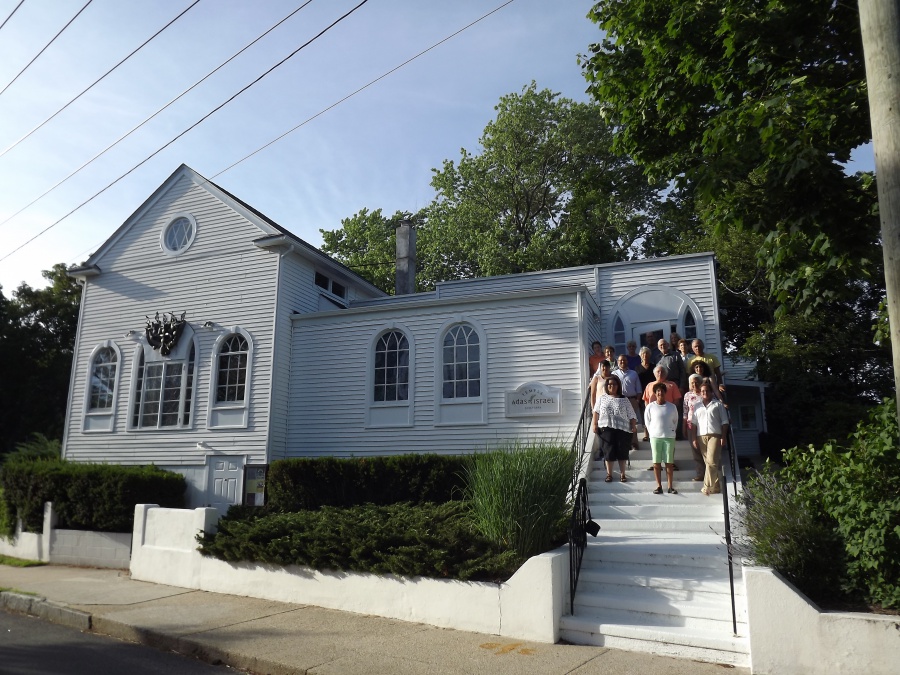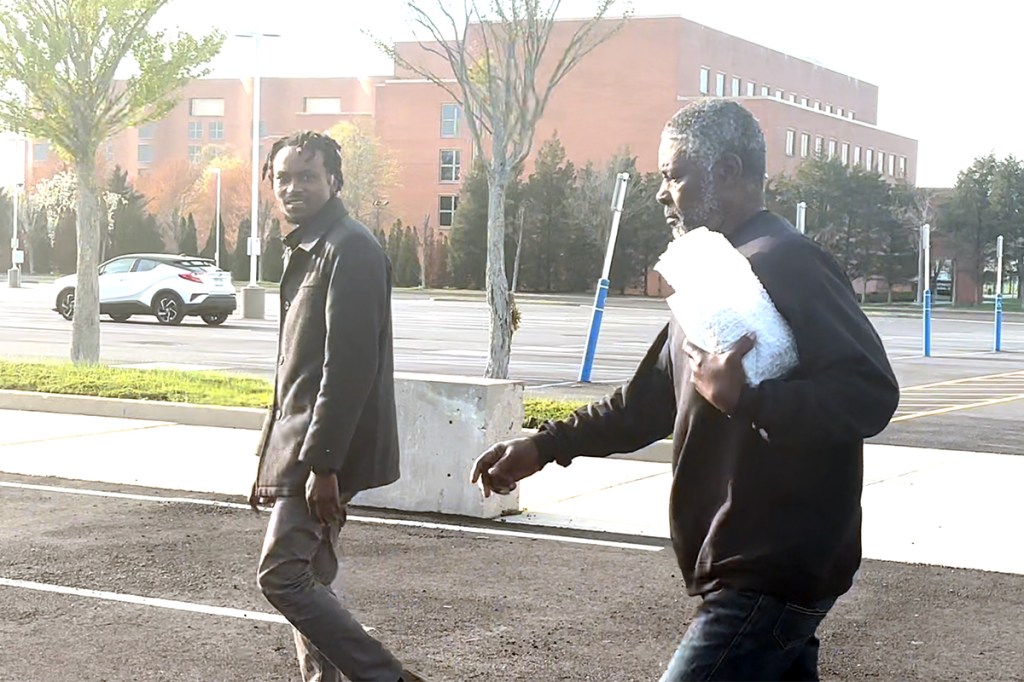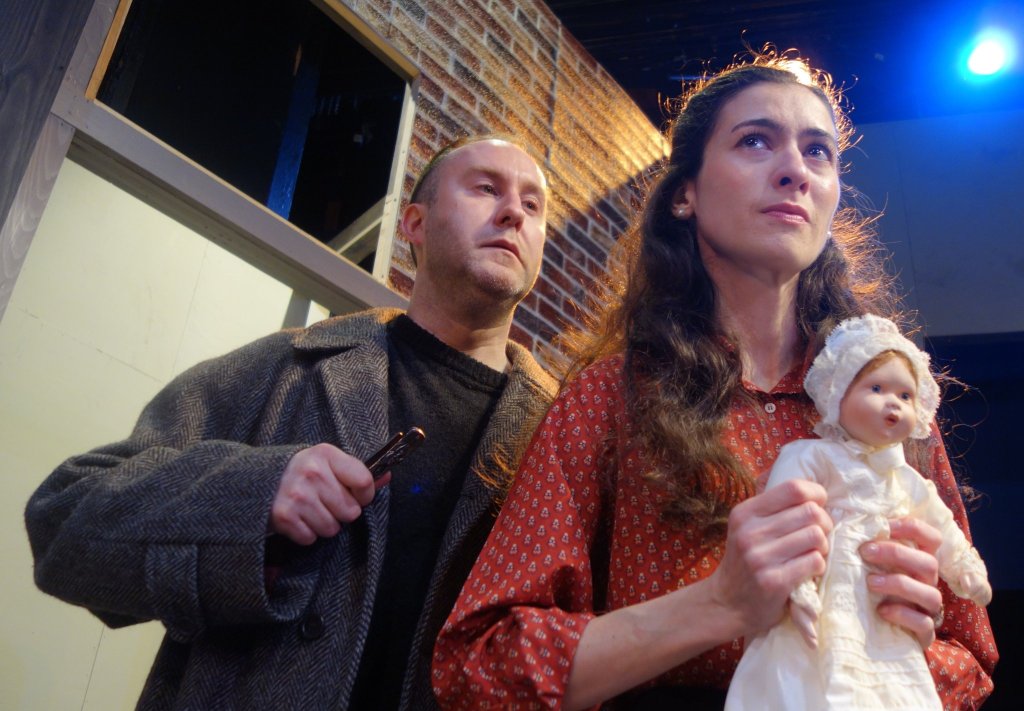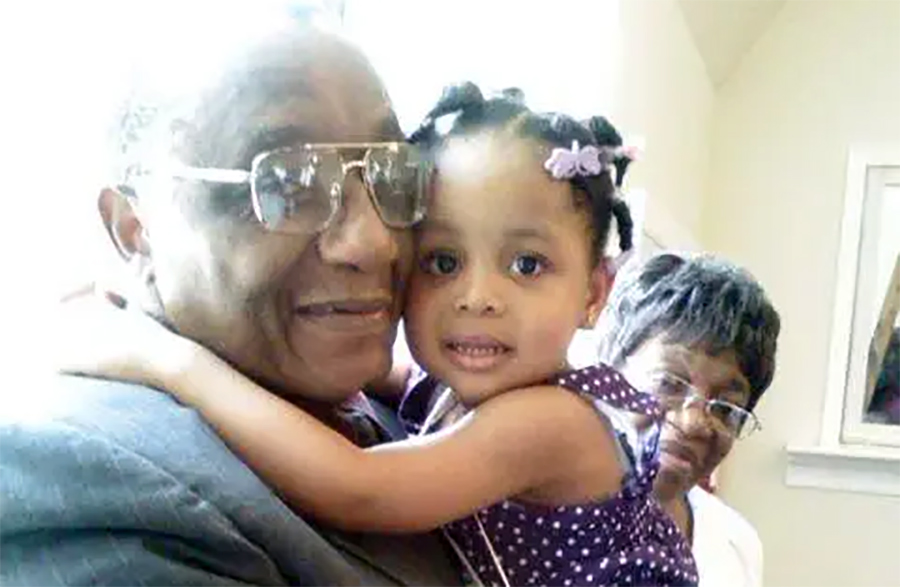Old Meets New at Temple Adas Israel in Sag Harbor

If you walk into the oldest synagogue on Long Island, Temple Adas Israel in Sag Harbor, you may notice a few things that harken back to the congregation’s historic past: a separate upstairs section where the women of the congregation once sat when the synagogue was an Orthodox temple, for example. Then in the room next to the synagogue stands an old cupboard holding tallitot, traditional Jewish prayers shawls, which used to serve as the Ark to hold the Torah. But while these and some of the more traditional elements of a Jewish service no longer have a prominent place at the liberal Reform synagogue today, the congregation proudly remembers its 19th century beginnings.
The life of the synagogue has often mirrored economic changes in Sag Harbor throughout the past century, and as a result the temple has seen many different phases since its establishment 115 years ago. When a watch factory relocated to the East End from New Jersey in the late 1800s, it brought with it many immigrant workers and their families who came in search of jobs. Amongst these immigrants were enough Jewish families to begin organizing a Jewish community in order to have a Jewish burial ground and host holiday services. The first services held in the synagogue took place during Rosh Hashanah, the Jewish New Year, in 1898. At the time, the congregation was known as Temple Mishcan Israel, and they followed more traditional Orthodox practices.
By the 1920s, though, economic decline in Sag Harbor meant that the congregation’s numbers suffered. A fire in 1925 also devastated two of the factories in the town, leading to lay-offs and further cutting back the numbers in the temple community to less than a dozen families, according to the detailed history posted on the Temple Adas website. Numbers suffered for several more decades.
There are still some members today who can remember the shifts that the temple has underdone, including Gertrude Katz, whose husband Donald served as president of the synagogue for many years. “My mother was very active at the synagogue,” Gertrude comments. When Gertrude was a child, her mother ran a local general store on Main Street, in a location that now houses a real estate agency. Katz mentions the level of diversity that was accepted in Sag Harbor at the time. For example, her mother would close the store on the Jewish holidays, but without any complaints from the local non-Jewish residents. Taking religious diversity even further, fundraisers for the synagogue, like dances held in a kindly farmer’s potato barn, were attended by people from all groups, not just the Jewish young people. “We couldn’t count on the Jews [to raise enough money], there weren’t enough [of us],” she explains. Donald Katz agrees, saying that “Our temple was not only supported by the Jews in Sag Harbor, but also the non-Jews.”
Another long-time temple member, Margaret Abelman Bromberg, also has history to share. “My family came to Sag Harbor in 1945,” Bromberg says. When she was a child, “many of the local businesses were owned by Jewish families.” She felt a sense of religious identity growing up, as she identified families by the religious group they belonged to—one family attended the Catholic Church in town, for example, another the synagogue. “The building was different,” Bromberg continues, explaining how there used to be a separate stairway leading from outside of the building directly to the women’s balcony, so that they would not need to enter the lower level of the synagogue at all. This was back when the synagogue was Orthodox, and thus separated the sexes during services.
In 1948, the synagogue officially moved away from its stricter Orthodox roots to begin its brief interlude with Conservative Judaism. However, this only lasted for a decade before the congregation became affiliated with the Reform movement of Judaism, an affiliation it still maintains today. Numbers began to grow, resulting possibly from the combination of a more liberal practice and population shifts on the East End. The Temple website explains that “by 1950, Sag Harbor’s Temple Adas Israel was once again a center of Jewish life.” The 1950s also saw great physical change to the synagogue, as the Jewish community acquired a new lot and added to the existing structure.
Sometimes the historic origins of the temple have appeared in unexpected ways over this time. For example, renovations in the basement of the synagogue in the 1970s uncovered a long forgotten mikveh, a ritual bath mainly used by Orthodox Jews to ritually purify themselves. The current president of the synagogue, Neal Fagin, remembers another hold-over from earlier times that was still in place when he arrived: a “modesty cloth,” really just a basic burlap piece of fabric that hung from the bannister on the old women’s balcony in order to prevent those sitting down below from seeing into the women’s skirts. When some discussed the possibility of replacing the modesty cloth, Fagin spoke up against it, claiming it did not belong in the modern, liberal temple.
By the late 1970s, the temple’s numbers started growing again. But both the town and the temple population had changed by then. Margaret Bromberg describes how by the 1980s, the insular community that had once existed in Sag Harbor had branched out. “When I was a kid, there wasn’t that sense of locals and city people [that there is now],” she explains. Neal Fagin, the current temple president, explains that back in the 1980s, “Most of the times the holidays went unobserved.” The temple itself even went through a period with a Reconstructionist rabbi, according to Bromberg. Reconstructionist Judaism is a small movement that tends towards a liberal prayer life like Reform, but with differences in its community structure and service structure. For the remaining part of the 20th century, the synagogue continued to thrive and improvements were periodically made to the building.
But whatever phase the temple was in, from its Orthodox roots to its current Reform status, the synagogue was rarely (if ever) able to afford a full-time rabbi year-round. Instead, they might come once a month in the winter or only during the summer. In 2010, though, that all changed, when Rabbi Leon Morris became Temple Adas Israel’s first full-time rabbi. Rabbi Morris had been coming to Temple Adas Israel for years on a part-time basis, but by 2010 it had become clear that something larger might be in store, and Rabbi Morris seized upon the opportunity “to be philosophically liberal, but to really embrace tradition.”
The presence of a full-time rabbi at Temple Adas Israel has allowed the synagogue to flourish: now they host numerous social activities, concerts, lectures by visiting speakers and more. The Rabbi himself is leading a Saturday class this summer on the controversial but engaging topic of “Who (and What) is a Jew?” The word “Rabbi” in Hebrew means “teacher,” and Rabbi Morris admits that “[teaching] has always been my passion.” Along with his wife, Dasee Berkowitz, the Rabbi has been making strides in helping the temple community grow in activities and numbers.
“[Having a full-time rabbi] certainly has contributed to the sense of community,” Margaret Bromberg explains. Many other congregants echo her happiness at having a religious leader in the community full-time, someone who can be present at all holidays and life cycle events for the Jewish families in the area. For a synagogue that sometimes did not even have a rabbi present at some holidays, the fact that they now might event seat 500 people for a holiday services is very impressive for this historic place.
Neal Fagin further comments on how his own experience at the synagogue has changed over the years as a result of the upswing in activity at the temple. He originally took on the position of president as a part-time position that used to run from Memorial Day through the High Holidays in the fall. But now that the synagogue has a full-time rabbi, things have changed. “We don’t consider ourselves a typical suburban temple,” Neal Fagin explains. Many families belong to Temple Adas Israel and another temple, often because the families live at another residence in the winter. This type of vacation community means that sometimes the High Holiday services in the fall can get quite busy, such this year when they fall in early September. Many summer residents will still be in Sag Harbor and will likely attend services out here, leading to an expectation of high numbers at Rosh Hashanah and Yom Kippur services.
Even as the temple moves into a new and vibrant era with a full-time rabbi and a thriving social life, the historic origins of the synagogue are rarely far from anybody’s mind. The sense of history fills everything, and as Gertrude Katz explains, “What I love [most about the synagogue today] is that I sit in the seat my mother sat in.” Though he is a relative newcomer to Sag Harbor, Rabbi Morris certainly agrees: “Everything we do now is building on the foundations that they [the founders] laid.” With the Rabbi’s vision of tradition paired with a liberal Reform philosophy, the synagogue is certainly entering its most exciting and active period yet.



